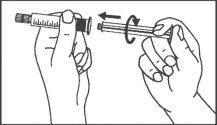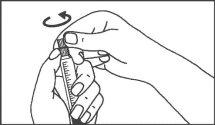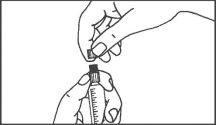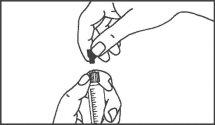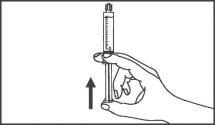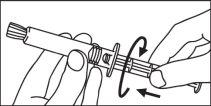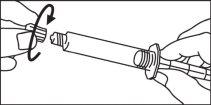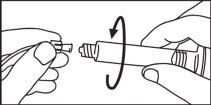
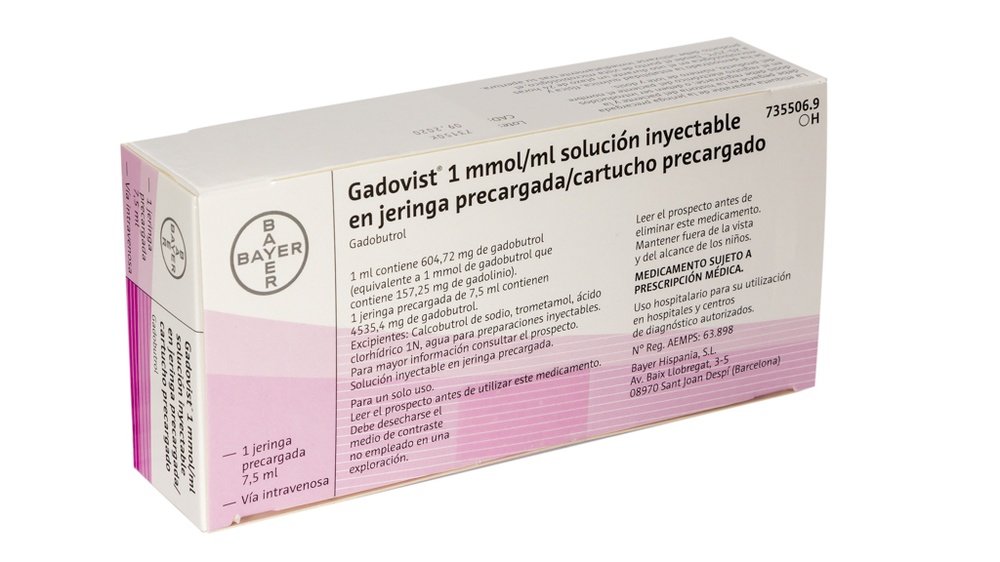
GADOVIST 1 mmol/ml INJECTABLE SOLUTION IN PRE-FILLED SYRINGE/PRE-FILLED CARTRIDGE

Ask a doctor about a prescription for GADOVIST 1 mmol/ml INJECTABLE SOLUTION IN PRE-FILLED SYRINGE/PRE-FILLED CARTRIDGE

How to use GADOVIST 1 mmol/ml INJECTABLE SOLUTION IN PRE-FILLED SYRINGE/PRE-FILLED CARTRIDGE
Introduction
Package Leaflet:information for the patient
Gadovist 1 mmol/ml solution for injection in pre-filled syringe/
pre-filled cartridge
Gadobutrol
Read all of this leaflet carefully before you start using this medicine,because it contains important information for you.
- Keep this leaflet, you may need to read it again.
- If you have any further questions, ask your doctor or the person who is giving you Gadovist (the radiologist) or the hospital staff where the MRI (Magnetic Resonance Imaging) is taking place.
- If you experience side effects, consult your doctor or radiologist, even if they are not listed in this leaflet. See section 4.
Contents of the pack
- What is Gadovist and what is it used for
- What you need to know before you use Gadovist
- How to use Gadovist
- Possible side effects
- Storing Gadovist
- Package contents and further information
1. What is Gadovist and what is it used for
Gadovist is a magnetic resonance imaging (MRI) contrast medium used for the diagnosis of the brain, spine, and blood vessels. Gadovist can also help your doctor determine the type of abnormalities (benign or malignant) known or suspected in the liver and kidneys.
Gadovist may also be used for MRI of abnormalities in other parts of the body. It facilitates the visualization of abnormal structures or lesions and helps in differentiating healthy tissue from diseased tissue.
It is indicated in adults and children of all ages (including full-term newborns).
How Gadovist works
MRI is an imaging diagnostic method that uses the behavior of water molecules in normal and abnormal tissues. This is done through a complex system of magnets and radio waves. Computers record the activity and transform it into images.
Gadovist is administered through an injection into your vein. This medicine is for diagnostic use only and will only be administered by a healthcare professional with experience in the clinical practice of MRI.
2. What you need to know before you use Gadovist
Do not use Gadovist if you
- are allergic to gadobutrol or any of the other components of this medicine (listed in section 6).
Warnings and precautions
Consult your doctor before using Gadovist if you
- have or have had an allergy (e.g., hay fever, hives) or asthma
- have had a previous reaction to any contrast medium
- have severely impaired kidney function
- have cerebral disorders with seizures (fits) or have other nervous system diseases
- have a pacemaker or any implant or clip that contains iron in your body.
Your doctor will decide if it is possible to perform the planned examination.
- Allergic reactions or other types of reactions that involve heart problems, difficulty breathing, or skin reactions may occur after using Gadovist. Severe reactions are possible. Most of these reactions occur within 30 minutes after administration of Gadovist. Therefore, you will be observed after treatment. Delayed reactions (after hours or days) have been observed (see section 4).
Kidneys/Liver
Tell your doctor if
- your kidneys are not working properly
- you have recently had or are about to have a liver transplant.
Your doctor may decide to perform a blood test to check the proper functioning of your kidneys before deciding on the use of Gadovist, especially if you are 65 years or older.
Newborns and Infants
Due to the immaturity of the renal function of newborns up to 4 weeks and infants up to 1 year of age, Gadovist should only be used in these patients after careful evaluation by the doctor.
Other medicines and Gadovist
Tell your doctor or pharmacist if you are using, have recently used, or might use any other medicines.
Pregnancy and breastfeeding
If you are pregnant or breastfeeding, think you may be pregnant, or plan to become pregnant, consult your doctor or pharmacist before using this medicine.
- Pregnancy
Gadobutrol may cross the placenta. It is not known if it affects the fetus. You should inform your doctor if you think you are pregnant or might be, as Gadovist should not be used during pregnancy unless it is absolutely necessary.
- Breastfeeding
Tell your doctor if you are breastfeeding or about to start. Your doctor will assess whether you should continue or interrupt breastfeeding 24 hours after administration of Gadovist.
Gadovist contains sodium
This medicine contains less than 23 mg of sodium per dose (based on the average amount administered to a 70 kg person); this is essentially "sodium-free".
3. How to use Gadovist
Gadovist is injected by a healthcare professional through a small needle into a vein. Your MRI examination can start immediately.
After the injection, you will be observed for at least 30 minutes.
Recommended dosage
The recommended dose suitable for you will depend on your body weight and the region examined by MRI:
In adults, a single injection of 0.1 milliliters of Gadovist per kilogram of body weight is recommended (this means that for a person weighing 70 kg, the dose would be 7 milliliters). However, an additional injection of up to 0.2 milliliters per kilogram of body weight may be administered within 30 minutes after the first injection. A total of 0.3 milliliters of Gadovist per kilogram of body weight may be administered as a maximum (this means that for a 70 kg person, the dose would be 21 milliliters) for imaging of the central nervous system (CNS) and magnetic resonance angiography (MRA) with contrast. A minimum dose of 0.075 milliliters of Gadovist per kilogram of body weight (this means that for a 70 kg person, the dose would be 5.25 milliliters) may be administered for CNS.
At the end of the leaflet, additional information on the administration and handling of Gadovist is included.
Dosage in special populations
The use of Gadovist is not recommended in patients with severe kidney problems or in patients who have recently had or are about to have a liver transplant. However, if use is required, only one dose of Gadovist should be administered during an examination, and a second injection should not be administered until at least 7 days have passed.
Use in newborns, infants, children, and adolescents
The recommended dose in children of all ages (including full-term newborns) is a single injection of 0.1 milliliters of Gadovist per kilogram of body weight for all indications (see section 1).
Due to the immaturity of the renal function of newborns up to 4 weeks and infants up to 1 year of age, Gadovist should only be used in these patients after careful evaluation by the doctor. Newborns and infants should only receive one dose of Gadovist during an examination and should not receive a second injection until at least 7 days have passed.
Elderly patients
If you are 65 years or older, it is not necessary to adjust the dose, but you may have a blood test to check the proper functioning of your kidneys.
If you use more Gadovist than you should
Overdose is unlikely to occur. If it happens, your doctor will treat all symptoms, and it is possible that dialysis will be used to remove Gadovist from your body. There is no evidence to suggest that hemodialysis is suitable for preventing the development of nephrogenic systemic fibrosis (NSF; see section 4), so it should not be used to treat this disease. In some cases, your heart will be monitored.
In case of overdose or accidental ingestion, contact the Toxicology Information Service (telephone 91 562 04 20).
If you have any further questions about the use of this medicine, ask your doctor or radiologist.
4. Possible side effects
Like all medicines, this medicine can cause side effects, although not everybody gets them. Most of these reactions occur within 30 minutes after administration of Gadovist. Delayed reactions (after hours or days) have been observed in rare cases. If this happens to you, inform your doctor or radiologist immediately.
The most serious side effects(which have been fatal or life-threatening in some cases) are:
- cardiac arrest, severe lung disease (acute respiratory distress syndrome), fluid in the lungs (pulmonary edema), and severe allergic reactions (anaphylactoid reactions) (including respiratory arrest and shock).
Additionally, the following life-threatening or fatal side effectshave been observed in some cases:
- shortness of breath (dyspnea), loss of consciousness, severe allergic reactions, severe drop in blood pressure that can lead to collapse, respiratory arrest, fluid in the lungs, inflammation of the mouth and throat, and low blood pressure.
In rare cases:
- allergic reactions (hypersensitivity and anaphylaxis) may occur, including severe reactions (shock) that require immediate medical intervention.
If you notice:
- swelling of the face, lips, tongue, or throat
- coughing and sneezing
- difficulty breathing
- itching
- nasal congestion
- hives (nettle rash)
inform the MRI department staff immediately. These may be the first signs of a severe reaction. Your examination may be suspended, and you may need further treatment.
The most common side effects(may affect up to 1 in 10 people) are:
- headaches, feeling sick (nausea), and dizziness.
Most side effects are mild to moderate.
The following side effectshave been observed in clinical trialsbefore the approval of Gadovist, according to their frequency:
Common:may affect up to 1 in 10 people
- headache
- feeling sick (nausea)
Uncommon:may affect up to 1 in 100 people
- allergic reaction, for example:
- low blood pressure
- hives
- swelling of the face
- swelling (edema) of the eyelids
- flushing
The frequency of the following allergic reactions is not known:
- a severe allergic reaction (anaphylactoid shock)
- a severe drop in blood pressure that can lead to collapse (shock)
- respiratory arrest
- difficulty breathing (bronchospasm)
- blue discoloration of the skin and mucous membranes
- inflammation of the mouth and throat
- inflammation of the throat
- high blood pressure
- chest pain
- inflammation of the face, throat, mouth, lips, and/or tongue (angioedema)
- conjunctivitis
- increased sweating
- coughing
- sneezing
- burning sensation
- pallor (pale skin)
- dizziness, altered taste, numbness, and tingling
- shortness of breath (dyspnea)
- vomiting
- redness of the skin (erythema)
- itching (including generalized itching)
- rash (including generalized rash, small flat red patches (macular rash), small raised circumscribed lesions (papular rash), itchy rash (pruritic rash))
- various reactions at the injection site (e.g., leakage into adjacent tissue, burning, cold, heat, redness, rash, pain, or hematoma)
- feeling of heat
Rare:may affect up to 1 in 1,000 people
- fainting
- seizure
- altered sense of smell
- rapid heartbeat
- palpitations
- dry mouth
- general malaise
- feeling of cold
Additional side effects that have been reported after the approval of Gadovist with unknown frequency(the frequency cannot be estimated from the available data):
- cardiac arrest
- a severe lung disease (acute respiratory distress syndrome)
- fluid in the lungs (pulmonary edema)
- cases of nephrogenic systemic fibrosis (NSF) have been reported, which causes skin hardening and may also affect soft tissues and internal organs.
After administration of Gadovist, changes in kidney function test results (e.g., increased serum creatinine) have been observed.
Reporting of side effects
If you experience any side effects, consult your doctor or radiologist, even if they are not listed in this leaflet. You can also report them directly through the Spanish Medicines Monitoring System for Human Use https://www.notificaram.es. By reporting side effects, you can help provide more information on the safety of this medicine.
5. Storing Gadovist
Keep this medicine out of the sight and reach of children.
Do not use this medicine after the expiry date which is stated on the label and carton after EXP. The expiry date is the last day of the month shown. This medicine does not require any special storage conditions.
Chemical, physical, and microbiological stability has been demonstrated for 24 hours at 20-25°C. From a microbiological point of view, the product should be used immediately after opening.
This medicine is a clear, colorless to pale yellow solution. Do not use this medicine if you notice a severe change in color or the presence of particles or if the container appears to be defective.
Medicines should not be disposed of via wastewater or household waste. The healthcare professional will dispose of this medicine when it is no longer needed. This will help protect the environment.
6. Container Content and Additional Information
Composition of Gadovist
The active ingredient is gadobutrol.
1 ml of injectable solution contains 604.72 mg of gadobutrol (equivalent to 1 mmol of gadobutrol containing 157.25 mg of gadolinium).
1 pre-filled syringe with 5.0 ml contains 3023.6 mg of gadobutrol.
1 pre-filled syringe with 7.5 ml contains 4535.4 mg of gadobutrol.
1 pre-filled syringe with 10 ml contains 6047.2 mg of gadobutrol.
1 pre-filled syringe with 15 ml contains 9070.8 mg of gadobutrol.
1 pre-filled syringe with 20 ml contains 12094.4 mg of gadobutrol.
1 pre-filled cartridge with 15 ml contains 9070.8 mg of gadobutrol.
1 pre-filled cartridge with 20 ml contains 12094.4 mg of gadobutrol.
1 pre-filled cartridge with 30 ml contains 18141.6 mg of gadobutrol.
The other components are sodium calcobutrol (see end of section 2), trometamol, hydrochloric acid 1N, and water for injectable preparations.
Appearance of the Product and Container Content
Gadovist is a clear, colorless to pale yellow injectable solution.
The container content is:
-1 or 5 pre-filled syringes containing 5, 7.5, and 10 ml of injectable solution (in a 10 ml glass or plastic syringe).
-1 or 5 pre-filled syringes containing 15 ml of injectable solution (in a 17 ml glass syringe or a 20 ml plastic syringe).
-1 or 5 pre-filled syringes containing 20 ml of injectable solution (in a 20 ml glass or plastic syringe).
-1 or 5 pre-filled cartridges containing 15, 20, and 30 ml of injectable solution (in a 65 ml cartridge).
Clinical containers:
- 5 pre-filled syringes containing 5, 7.5, 10, 15, 20 ml of injectable solution
- 5 pre-filled cartridges containing 15, 20, 30 ml of injectable solution
Only some container sizes may be marketed.
Marketing Authorization Holder and Manufacturer
Marketing Authorization Holder
Bayer Hispania, S.L.
Av. Baix Llobregat, 3-5
08970 Sant Joan Despí (Barcelona)
Spain
Manufacturer
Bayer AG
Müllerstrasse 178
13353 Berlin
Germany
This Medicinal Product is Authorized in the Member States of the European Economic Area under the following Names:
Austria, Germany | Gadovist 1.0 mmol/ml Injektionslösung in Fertigspritzen/Patronen |
Belgium, Bulgaria, Cyprus, Denmark, Estonia, Finland, Greece, Italy, Luxembourg, Norway, Portugal, Sweden | Gadovist |
Croatia | Gadovist 1.0 mmol/ml otopina za injekciju u napunjenoj štrcaljki/ulošku. |
France | GADOVIST 1.0 mmol/ml, solution injectable en seringue préremplie |
Iceland | Gadovist 1.0 mmól/ml stungulyf, lausn í áfylltum sprautum/rörlykjum |
Ireland | Gadovist 1.0 mmol/ml solution for Injection in prefilled syringe Gadovist 1.0 mmol/ml solution for Injection in prefilled cartridge |
Netherlands | Gadovist 1,0 mmol/ml, oplossing voor injectie in voorgevulde spuit/patroon |
Slovenia | Gadovist 1,0 mmol/ml raztopina za injiciranje v napolnjeni injekcijski brizgi/vložku |
Slovakia | Gadovist 1,0 mmol/ ml |
Spain | Gadovist 1 mmol/ml solución inyectable en jeringa precargada/ cartucho precargado |
Malta | Gadovist 1.0 mmol/ml solution for injection pre-filled syringe/cartridge |
Date of the Last Revision of this Leaflet:09/2024.
Other Sources of Information
Detailed information on this medicinal product is available on the website of the Spanish Agency for Medicines and Health Products (AEMPS) (http://www.aemps.gob.es)
-----------------------------------------------------------------------------------------------------------------------------
This information is intended only for healthcare professionals:
- Renal Insufficiency
Before administration of Gadovist, it is recommended to evaluate all patients for possible renal dysfunction through laboratory tests.
Cases of nephrogenic systemic fibrosis (NSF) associated with the use of some gadolinium contrast agents have been reported in patients with severe acute or chronic renal insufficiency (GFR or glomerular filtration rate < 30ml/minute/1.73m2). Patients undergoing liver transplantation have a special risk since the incidence of renal failure is high in this group. Since there is a possibility that NSF may occur with Gadovist, it should only be used in patients with severe renal insufficiency and in patients in the perioperative period of a liver transplant after a careful risk-benefit assessment and if diagnostic information is essential and cannot be obtained through contrast-free magnetic resonance imaging. If the use of Gadovist is necessary, the dose should not exceed 0.1 mmol/kg body weight. During an examination, no more than one dose should be administered. Due to the lack of information on repeated administration, the administration of Gadovist should not be repeated unless an interval of at least 7 days has passed between injections.
Since the renal elimination of Gadovist may be reduced in elderly patients, it is especially important to evaluate patients aged 65 and older for possible renal dysfunction.
Hemodialysis shortly after the administration of Gadovist may be useful for the elimination of Gadovist from the body. After 3 sessions of hemodialysis, approximately 98% of the contrast agent is eliminated from the body. However, there is no evidence to support the initiation of hemodialysis for the prevention or treatment of NSF in patients who are not yet undergoing hemodialysis.
- Pregnancy and Lactation
Gadovist should not be used during pregnancy unless the clinical situation of the woman requires treatment with Gadovist.
The continuation or interruption of breastfeeding 24 hours after the administration of Gadovist will be at the discretion of the doctor and the breastfeeding mother.
- Hypersensitivity Reactions
As with other intravenous contrast agents, Gadovist may be associated with hypersensitivity/anaphylactoid reactions or other idiosyncratic reactions characterized by cardiovascular, respiratory, or cutaneous manifestations, which can range from mild to severe reactions, including shock. In general, patients with cardiovascular diseases are more susceptible to serious or even fatal consequences from severe hypersensitivity reactions.
The risk of hypersensitivity reactions may be greater in the following cases:
- previous reaction to contrast agents
- history of bronchial asthma
- history of allergic disorders
In patients with an allergic predisposition, the decision to use Gadovist should be made after a careful risk-benefit assessment.
Most of these reactions occur within 30 minutes after administration. Therefore, it is recommended to observe the patient after treatment.
It is necessary to have the appropriate medication available for the treatment of hypersensitivity reactions, as well as to prepare for the application of emergency measures.
In rare cases, delayed reactions (after hours or several days) have been observed.
- Seizure Disorders
As with other gadolinium-based contrast agents, special caution should be exercised in patients with a low convulsive threshold.
- Overdose
In the event of an accidental overdose, cardiovascular monitoring (including ECG) and monitoring of renal function are recommended as precautionary measures.
In the case of overdose in patients with renal insufficiency, Gadovist can be eliminated through hemodialysis. After 3 sessions of hemodialysis, approximately 98% of the contrast agent is eliminated from the body. However, there is no evidence to support the initiation of hemodialysis for the prevention of nephrogenic systemic fibrosis (NSF).
- Before Injection
This medicinal product is intended for single use.
This medicinal product is a clear, colorless to pale yellow solution. The solution should be visually inspected before use.
Gadovist should not be used if it shows significant color changes, particle formation, or if the container is defective.
- Instructions for Use
Pre-filled Syringes
The pre-filled syringe should be removed from the container and prepared for injection immediately before administration.
The end cap should be removed from the pre-filled syringe immediately before use.
Glass syringe:
MANUAL INJECTION | ||
|
| |
|
| |
|
| |
|
| |
|
| |
|
|
Plastic syringe:
MANUAL INJECTION | INJECTION WITH INJECTOR | |
|
| |
|
| |
|
| |
|
| |
|
| |
|
| |
|
| |
|
| |
|
Pre-filled Cartridges
The administration of contrast agents should be performed by qualified personnel using appropriate procedures and equipment.
The administration of contrast agents should be performed using a sterile technique.
The contrast agent should be administered using a MEDRAD Spectris injector.
The instructions provided by the manufacturers of the devices used should be followed.
Any unused contrast agent should be discarded according to local regulations.
Validity Period after First Opening of the Container
Any unused injectable solution should be discarded. Chemical, physical, and microbiological stability has been demonstrated for 24 hours at 20-25°C. From a microbiological point of view, the product should be used immediately. If not used immediately, the storage times during use and the conditions prior to use are the responsibility of the user.
The detachable label of the pre-filled syringes/cartridges should be attached to the patient's medical history to allow for accurate recording of the gadolinium contrast agent used. The dose used should also be recorded. In the case of electronic patient records, the product name, batch number, and administered dose should be entered.
Posology
The lowest dose that provides sufficient enhancement for diagnostic purposes should be used. The dose should be calculated based on the patient's body weight and should not exceed the recommended dose per kilogram of body weight indicated in this section.
- Adults
Indications in the CNS
The recommended dose in adults is 0.1 mmol per kilogram of body weight (mmol/kg bw), equivalent to 0.1 ml/kg bw of the 1.0 M solution.
If a clinically justified suspicion of a lesion persists despite a non-diagnostic MRI or when more accurate information may influence patient treatment, an additional dose of up to 0.2 ml/kg bw may be administered within 30 minutes after the first injection. A dose of 0.075 mmol of gadobutrol per kg of body weight (equivalent to 0.075 ml of Gadovist per kg of body weight) may be administered as a minimum for CNS imaging.
Whole-body MRI (except for MRA)
In general, the administration of 0.1 ml of Gadovist per kg of body weight is sufficient to answer the clinical question.
Magnetic Resonance Angiography (MRA) with contrast
Imaging of 1 field of view (FOV): 7.5 ml for body weights below 75 kg; 10 ml for body weights equal to or above 75 kg (equivalent to 0.1-0.15 mmol/kg bw).
Imaging of more than 1 field of view (FOV): 15 ml for body weights below 75 kg; 20 ml for body weights equal to or above 75 kg (equivalent to 0.2-0.3 mmol/kg bw).
- Pediatric Population
The recommended dose in children of all ages (including term neonates) is 0.1 mmol of gadobutrol per kilogram of body weight (equivalent to 0.1 ml of Gadovist per kilogram of body weight) for all indications (see section 1).
Due to the immaturity of renal function in neonates up to 4 weeks and infants up to 1 year of age, Gadovist should only be used in these patients after a careful assessment at a dose not exceeding 0.1 mmol/kg body weight. During an examination, no more than one dose should be administered. Due to the lack of information on repeated administration, the administration of Gadovist should not be repeated unless an interval of at least 7 days has passed between injections.
Images
The required dose is administered intravenously as a bolus injection. Contrast-enhanced MRI can begin immediately after (shortly after injection, depending on the pulse sequences used and the study protocol).
Optimal signal enhancement is observed during the first arterial pass for contrast-enhanced MRA and during a period of approximately 15 minutes after the injection of Gadovist for CNS indications (the timing depends on the type of lesion/tissue).
T1-weighted image sequences are particularly suitable for contrast-enhanced examinations.
Additional information on the use of Gadovist is provided in section 3 of the leaflet.
- Country of registration
- Active substance
- Prescription requiredYes
- Manufacturer
- This information is for reference only and does not constitute medical advice. Always consult a licensed doctor before taking any medication. Oladoctor is not responsible for medical decisions based on this content.
- Alternatives to GADOVIST 1 mmol/ml INJECTABLE SOLUTION IN PRE-FILLED SYRINGE/PRE-FILLED CARTRIDGEDosage form: INJECTABLE, 604.72 mg gadobutrol/mlActive substance: gadobutrolManufacturer: Bayer Hispania S.L.Prescription requiredDosage form: INJECTABLE, 1.0 mmol/mlActive substance: gadobutrolManufacturer: Ge Healthcare Bio-Sciences, S.A.U.Prescription requiredDosage form: INJECTABLE, 1.0 mmol/mlActive substance: gadobutrolManufacturer: Ge Healthcare Bio-Sciences, S.A.U.Prescription required
Alternatives to GADOVIST 1 mmol/ml INJECTABLE SOLUTION IN PRE-FILLED SYRINGE/PRE-FILLED CARTRIDGE in other countries
The best alternatives with the same active ingredient and therapeutic effect.
Alternative to GADOVIST 1 mmol/ml INJECTABLE SOLUTION IN PRE-FILLED SYRINGE/PRE-FILLED CARTRIDGE in Poland
Alternative to GADOVIST 1 mmol/ml INJECTABLE SOLUTION IN PRE-FILLED SYRINGE/PRE-FILLED CARTRIDGE in Ukraine
Online doctors for GADOVIST 1 mmol/ml INJECTABLE SOLUTION IN PRE-FILLED SYRINGE/PRE-FILLED CARTRIDGE
Discuss dosage, side effects, interactions, contraindications, and prescription renewal for GADOVIST 1 mmol/ml INJECTABLE SOLUTION IN PRE-FILLED SYRINGE/PRE-FILLED CARTRIDGE – subject to medical assessment and local rules.





